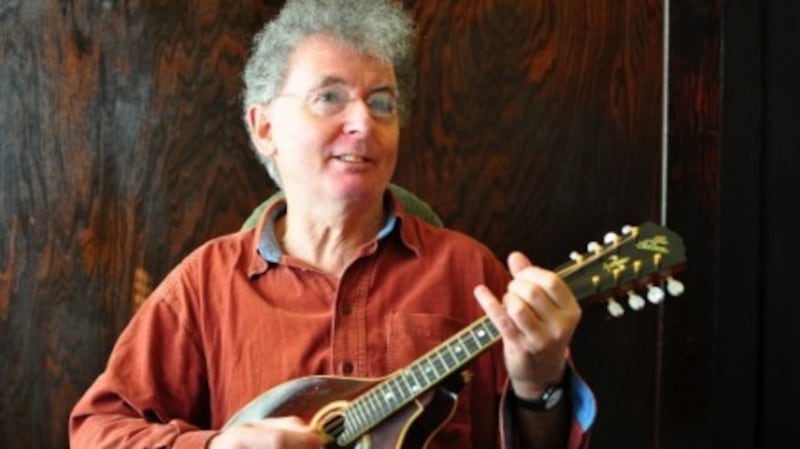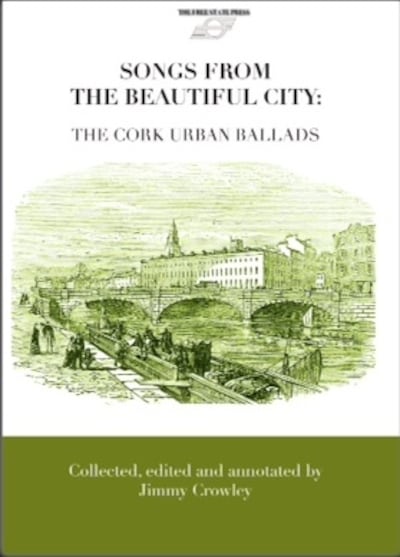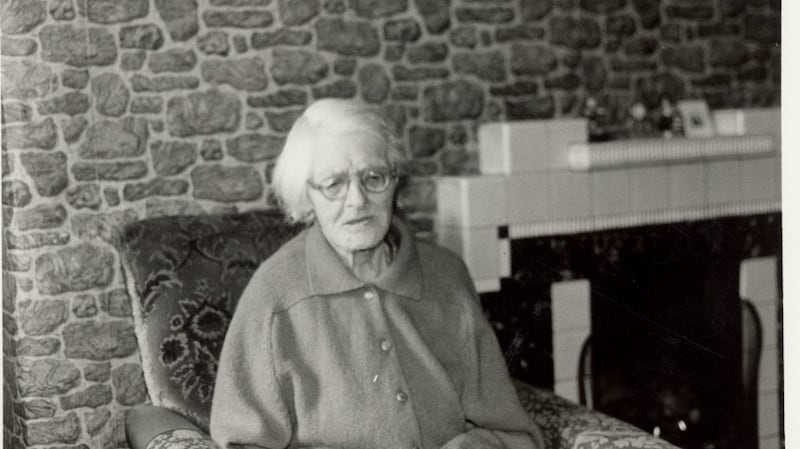Until quite recently, as far as folk singing was concerned, Ireland was overwhelmed by its rich and capacious rural hinterland. “Modh’s Half”, as we used to call Munster, still cherished the lost hopes of the exiled Prince: the Pretender and younger Stuart. That fervent, pervasive Jacobite feeling, even today, still haunts the hedges of the Maigue River; of Sliabh Luachra, Muskerry and Corca Dhuibhne.
In “Con’s Half”, that’s anywhere above Clonmacnoise, and burnished from the west by the pulsating lighthouse of Connemara, sean-nós, that elusive, uncertified approach to singing, kept the Irish language in the ears if not the mouths of the people. And everyone who knows anything about singing will tell you, that the best songs in the world are in Ulster; on the banks of sweet Lough Erne; on Dobbin’s flowery vale, and on the shores of Lough Bran. Songs like Farewell to Ballymoney and I am a Youth who’s Inclin’d to Ramble lay the course to True North and make us wish for a different accent.
The Irish Folklore Commission undertook an ineffable body of work when they dispatched collectors to the four corners of Ireland to collect “what remained” of songs, music, calendar customs etc. Commendable and pioneering as they were, (the methodology of Séamus Ó Duillearga and his team was followed in many emerging nation states who sought to preserve an indigenous culture), they cared not a fig for the people of Ireland’s cities who apparently didn’t have a cosmos beyond what they aped and emulated from the trans-marine music hall stage. Urban folk didn’t believe in banshees, fairy forts and cared little about eggs planted in the corners of fields to soften the coughs of the people who did you a wrong turn.


The position of folklore studies, thankfully, has come a long way since.
Urban studies, street ballads, urban legends, inner-city cants, rants and raps are now being collated and studied with the same fervour that people employed for the singing of Seán de hÓra or Joe Heaney in the sixties and seventies. In Roinn an Bhéaloidis in UCC, the Northside Project proudly furrowed a new field in ethnography, mapping dialects, phonetics, skipping songs, exploring the arteries of inner-city cosmology.
A long time ago a great man called Chris Twomey told me that what was local was universal. He played me the Copper Family in Sussex singing A Week before Easter and explained to me how it was a first cousin of The False Bride, sung by John Connell in Baile Mhuirne. Then he took up his autoharp and sang me the Appalachian version. My mentor, even more significantly, told me that Cork City had an urban ballad tradition that embraced sporting heroes, the didactic muse, the heartrending love of the Beautiful City that John Fitzgerald (the bard of the Lee), Fr Prout and “honest” Dick Milliken evinced and a vibrant broadsheet legacy. Chris went to pains to remind me that these were not the parlour ballads of the bourgeoisie, as supposed, but had been embraced by the people in their soirees.
He gave me a starter pack: the words of Connie Doyle’s Armoured Car about a harrier from Fairhill and bid me search the lanes for more.
Propitiously in the late sixties, I was serving my time as a cabinetmaker and there, at Buckleys’ Furniture and Bedding, Brown Street, Cork, among the glue-pots and aprons, I heard and collected fine songs, both local and “parallel” ballads; songs like The Bold Trouper (no 311 in the Roud Index of classic ballads), The Ball of Yarn (Roud 1404); Johnny Jump Up, Boozing, Let’s All go Down the Marina, etc. Not only was there a city way of talking: there was a city way of singing too and I consciously emulated the more colourful exponents and cast off my Dublin brogue, which I had hitherto employed from listening to heroes like Johnny Moynihan, Al O’Donnell and Ronnie Drew.


One charmed day I left the workshop for a ramble over to the Coal Quay at lunchtime. Obsessed with most things from the past, I was looking for a brass stud or two with which to fasten the neck of my Guard-blue collarless shirt. Chris Twomey had pronounced that the uniform of our band, Stokers Lodge, should be black shoes, navy blue trousers, a CIE waistcoat burnished by silver buttons and a collarless blue shirt. I suppose it was a statement of solidarity with the proletariat.
Timmy McCarthy’s shop in Cornmarket Street sold second-hand clothes, wide-brimmed hats and those green military jackets beloved of children of the sixties. I had a NordMende cassette recorder in my bag – I never travelled without it, and Timmy said, “Switch on your tape recorder!” There and then, in the cool of the midday sun, I collected The Coal Quay Market which appeared on our second album, Camp House Ballads. Then he sang me a local version of the seasonal Wren Boys’ Song and gave me a lovely porcelain collar stud within a brass circle. I still treasure his vivacious, quintessentially Cork performance, which, as it turned out, had a wider provenance than I thought.
Last year I happened to be the guest at Lewes Folk Club in Essex and my hostess, a girl with the most magical name ever, Valmai Goodyear, called me aside after the gig and said, “There’s something queer about the Coal Quay Market…and it’s haunting me…”
Next morning she played me the Copper Family singing The Suit of Corduroy which resembled The Coal Quay Market in melody, context and spirit. She was up all night, she said, trying to establish the link. I told her that finding a “cousin” was nearly better than finding the song itself.
I am grateful to all the extraordinary characters, generous to a fault, who passed on the songs to me that wound up between the covers of Songs from the Beautiful City: the Cork Urban Ballads. And not unlike the great Sam Henry in the North who ploughed the same furrow with his Songs of the People, I too was able to find a benevolent newspaper editor in John Dolan of the Cork Evening Echo who generously accepted my notion of a serial weekly column of Cork ballads. As in Sam’s case, a word from columnist to reading audience often discovered a new song or verse. I’ll never forget extraordinary women like Helena Ronayne, who bequeathed me Salonika, saying she was the last woman in Cork to have it and bid me pass it back to the people. Nor should I forget the host of new writers writing in the broadside ballad tradition of the streets of Cork, people like Pat Daly who passed on their songs of the present day to me.
Because, as Frank Harte declared: "History was written by the winners: the ballads written by the people."
Songs from the Beautiful City: the Cork Urban Ballads is for sale on Jimmy's website at €40

















